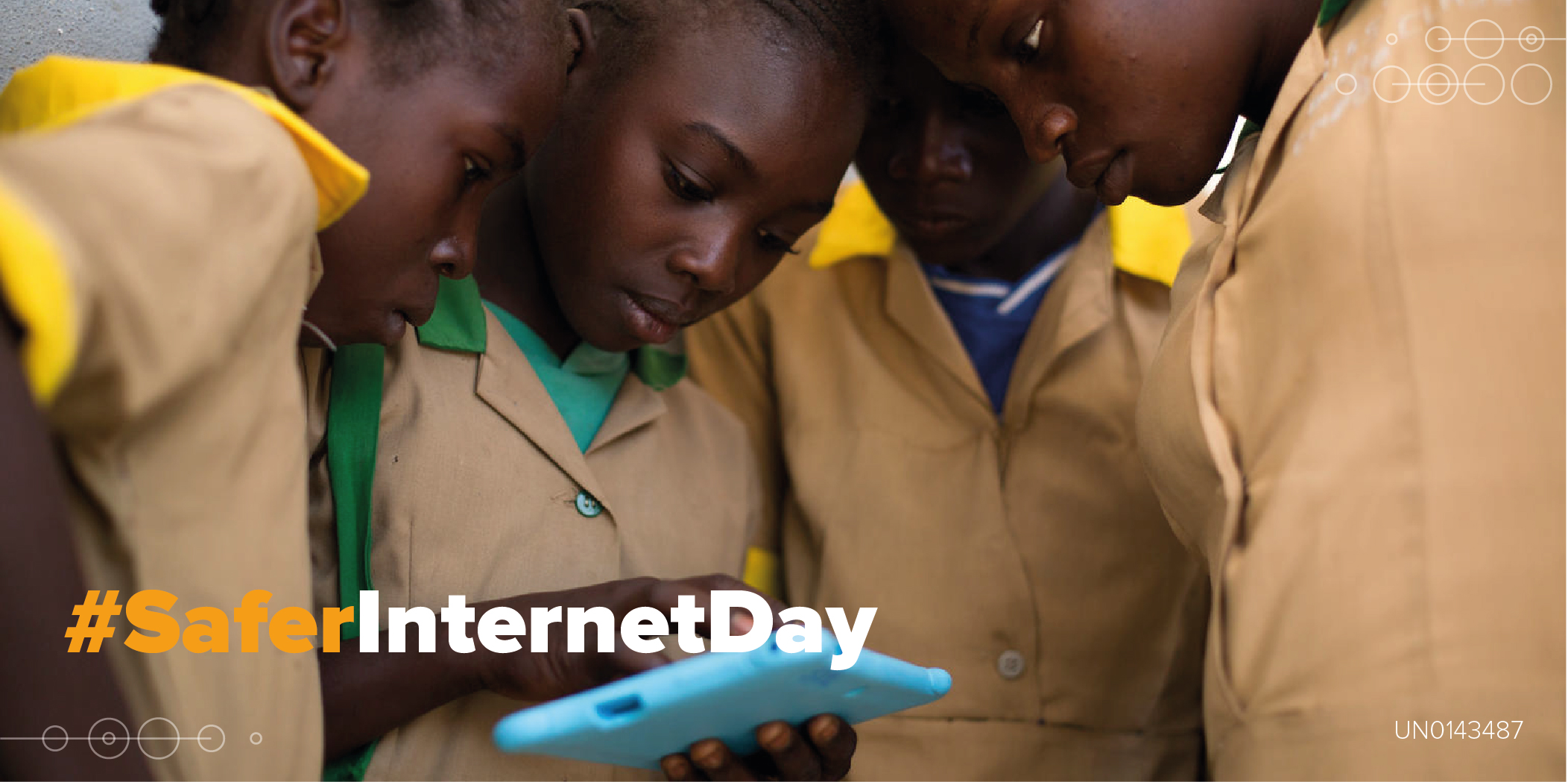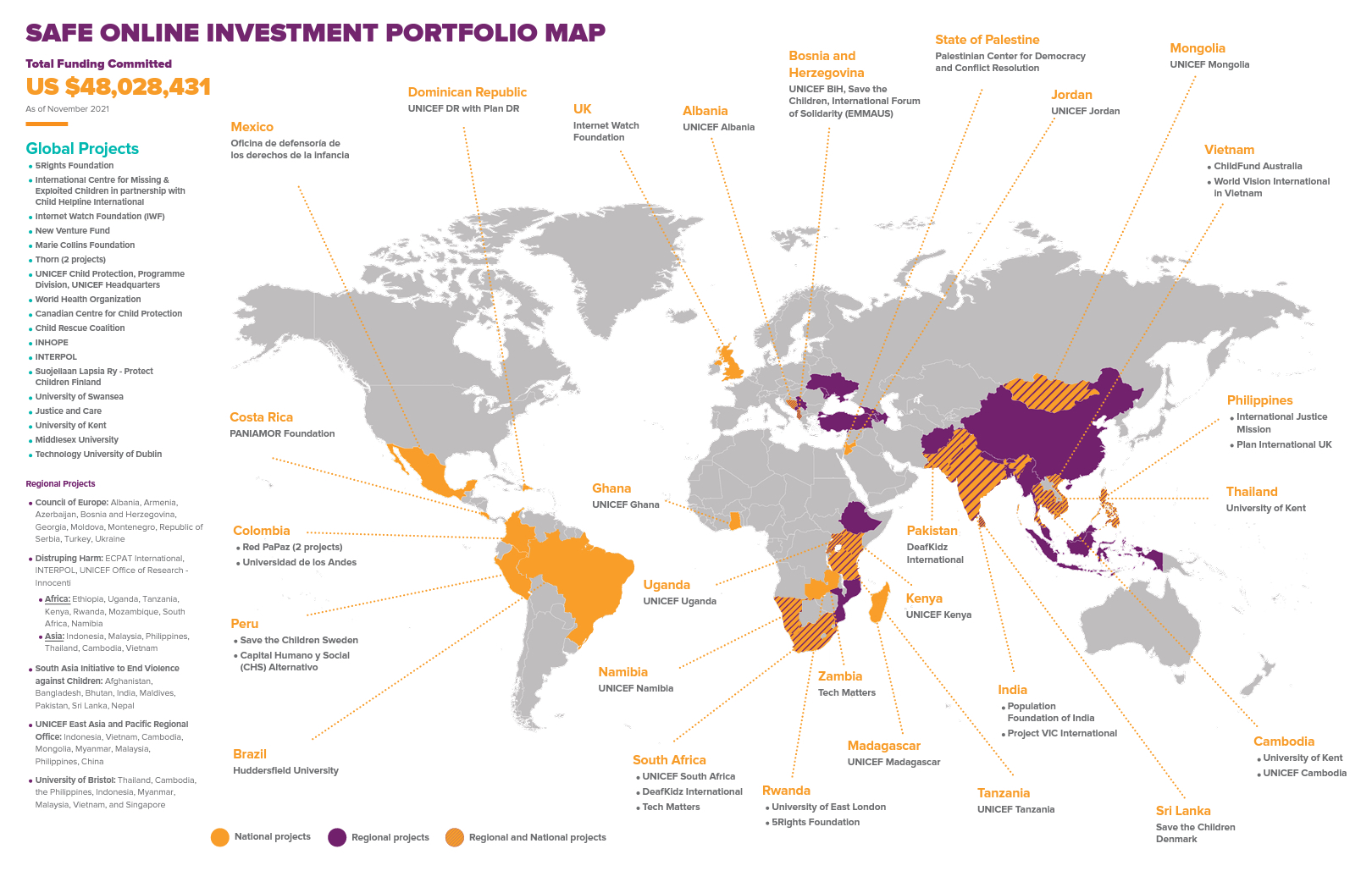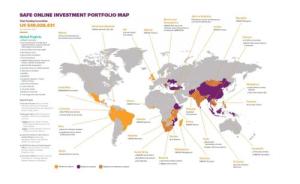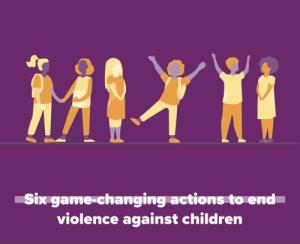
Children’s lives are increasingly taking place online, with one child going online for the first time every half a second. The COVID-19 pandemic has sharply increased all forms of online activity. School closures affected over 90 percent of the student population. Those that had access relied heavily on the internet for learning. With repeated lockdowns around the world, play and socialising are increasingly taking place online as well.
But the digital world was not designed with child safety in mind. Threats of online violence such as child sexual exploitation and abuse (CSEA), cyber-bullying, harassment, and grooming are growing exponentially and adapting as new technologies emerge.
Which is why Safer Internet Day, on February 8, marks an important moment to come together to address urgent challenges. Governments, civil society, businesses, educators and children from across the globe are mobilising on this day to acknowledge and promote the theme of "Together for a better internet".
Safe Online believes that a better internet is where all children, no matter where they live, can safely enjoy all the benefits the online world has to offer. Now more than ever, there is an urgent need to make sure that this becomes a reality.
How safe is the internet for children?
Online CSEA has increased exponentially over the past two decades, fueled by the growth in internet access and digital technologies that can increase the threat. The pandemic has made things worse, with both children and sexual offenders spending more time online. There is an alarming increase in reported child sexual abuse materials (CSAM), online grooming activity, and risk-taking by minors. As of 2021, there were 29 million reports of CSAM to NCMEC which include 85 million photos, videos and files; this marks a 35% increase compared to 2020. IWF informed that in 2020 over 90% of the sexual material they reviewed involved girls and children under the age of 13.
While 97% of all child sexual abuse material is hosted in countries with high digital infrastructure (largely Europe and North America), most reports of suspected abuse are from the emerging markets in low- and middle-income countries - largely due to gaps in legislation, protection, and prevention and other socio-economic factors.
With financial support from the End Violence Fund through its Safe Online initiative, UNICEF carried out a review of 29 low- and middle-income countries to understand the state of and highlight gaps in protection from online sexual abuse. With increased digitalisation, many countries have taken measures to improve online safety. Most of the countries surveyed in the study have implemented some policies, enforced laws, and created helplines to address online CSEA, but despite governments and other actors increasing efforts there are still many systemic challenges to address. The report found that “59% of the surveyed countries have national policies or strategy, but significant gaps remain in legislative frameworks in the majority (over 90%) of countries.”
The review also shows that where laws exist, there is limited enforcement due to low technical and human resource capacity and a lack of awareness among both the technology industry and law enforcement agencies. Child protection systems are weak overall, with limited awareness of and urgency to address online and offline child sexual exploitation and abuse. Due to such shortcomings, there is ineffective implementation of programmes and policies to effectively prevent and respond to online violence against children. These are urgent issues to address to ensure that the internet is safe for all children.
#SafeOnline - Strengthening systems and accelerating progress
Through the Safe Online initiative, the End Violence Partnership is committed to making the internet safer for all children and is actively working to fill gaps in research, policy and implementation.
Safe Online continues to catalyse change and collaborative action across sectors and countries by investing financial resources for child online safety. This approach builds on existing evidence, lessons and progress that the Safe Online portfolio of grantees, partners and the wider ecosystem have made in recent years to develop a stronger and more coordinated response to online CSEA.
- To date, $48 million have been invested in 60 projects with impact in over 70 countries.
- In 2022, over $20 million will be invested to strengthen systems, generate evidence and develop technology solutions.

Crucially, alongside the investments, Safe Online will continue fostering knowledge generation and collaboration within the Safe Online Community of grantees and the wider ecosystem to maximise the use of collective resources and ensure investments have a broad impact.
Safe Online has also played a critical role to accelerate progress and strengthen the global architecture to address important gaps. It has been fostering a strong collaborative network of partners across sectors to share knowledge, best practices and solutions, along with coordinating joint efforts to put child online safety at the heart of key policy debates at national, regional and global level.
In an encouraging sign of accelerated progress, political will is increasingly driving large-scale change to make the internet safe for children:
- Earlier this year, G7 governments announced a set of ground-breaking commitments to combat online CSEA.
- In a historic move, the UN Convention on the Rights of the Child (UNCRC) adopted General Comment No. 25, marking the first instance of including the digital rights of children in its framework.
- In 2020, the UN Secretary General’s Roadmap for Digital Cooperation included a specific call-out on the need to tackle online CSEA for the first time.
- With eight global partners, we jointly released a multistakeholder technical note and a resource pack with guidance on making digital platforms safe for children during COVID.
- Anew collaboration was formed with the Technology Coalition – a global alliance of leading technology firms coming together to protect children from online sexual abuse.
- As a result of coordinated efforts and investments, both SAIEVAC and ASEAN now have Regional Plan of Action to address online child violence.
#SafeOnline – Call to action for a Safer Internet for children
To support these efforts and catalyse political change, jointly with key experts and partners and as part of the Together to #ENDviolence global campaign, Safe Online has developed a policy call directed at governments, industry and other key stakeholders to make the internet safe for children.
Endorsed by international leaders and backed by the best available evidence, the Safe Online Policy Call asks governments and the private sector to implement comprehensive policies based on children’s rights to access the digital world in safe and secure ways. It calls for increased investments and commitments to prevent all activities that may harm children online.
Safer Internet Day is an opportunity to celebrate the progress made so far but it is also a chance to continue the momentum in advocacy and action at this critical moment – coming together to make sure that all children experience a safe and nurturing online environment.
2022 will be a critical year as the European Union will bring forward a new legislation to tackle child sexual abuse along with the continued passage of the Digital Services Act; both are an exceptional opportunity for the EU to set high standards to protect children online and resolve its position as the global hotspot for hosting child sexual abuse material.
The internet was not designed with children’s safety in mind – but we have an urgent duty to reimagine what a safe internet for children looks like and to proactively create policies, technologies and digital spaces that put children’s health and safety first. To overcome the major obstacles to an effective response at local, national and global levels, we need to move from addressing safety as an afterthought to embedding safety by design into all policies and technology platforms that children are in touch with.
All players across all countries must come together to urgently invest in adequate solutions to tackling online harms and protect children on existing and emerging digital platforms.
Click here to find out more about the progress in making the internet safer for children or sign up for the End Violence newsletter.





